Ratchet straps are the go-to solution for securing a wide variety of loads on lorries and heavy trailers. They’re easy to use, flexible, strong and demonstrably better than rope.
Ratchet straps have, for the most part, replaced rope as a tie-down method on HGVs. Rope is affected by the weather, digs into loads and requires the driver or loader to know a range of knots. Ratchet straps are quick to tension and release, are only affected by the weather over the long term and spread the clamping force over a wider area meaning less likelihood of damaging the goods due to them being (usually) between 35-50mm wide.

Ratchet strap dimensions
Ratchet tie-downs do come in consumer widths of 25mm, but these should not be used on heavy vehicles.
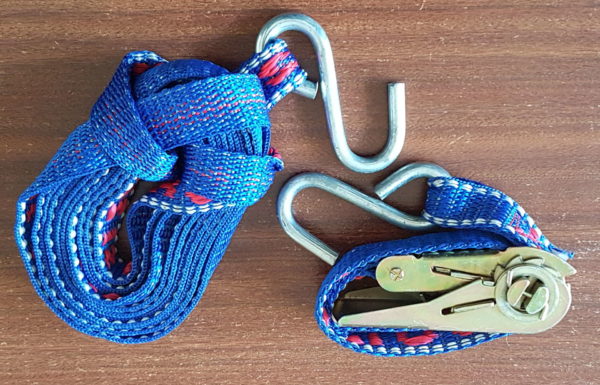
They are commonly 9m or 10m long so that they are long enough for a full-height load on a semitrailer.
Each ratchet tie down comprises two parts:
- The ratchet end which has a hook and/or a hook and keeper (different hook types are available)
- The strap end which also has a hook and/or hook and keeper
The most common end is a J hook or claw hook.
The hooks attach either to a rope rail or an anchor point. The working end of the strap is fed through a slot in the ratchet and then tensioned.
Ratchet strap loading capacity
Typical ratchet straps for heavy vehicles will support tensioning ranging from 1000kg to 5,000kg for 38-50mm straps and up to 10,000kg for 75mm straps.
Ratchets will be tested to a safety factor of 2:1. I.e. a strap rated to 2000kg will have been tested to 4000kg. This gives a margin of error in case of any minor damage to the strap. However, if you see damage on any strap, it should be thrown away as it may snap under tension and you’ll lose your load.
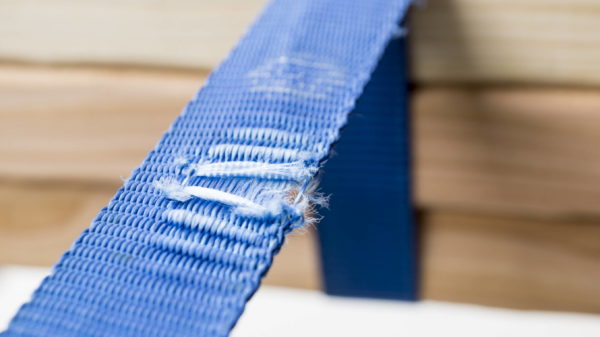
For straps that will have a harder life, you can purchase sleeves that help protect them against sharp edges.
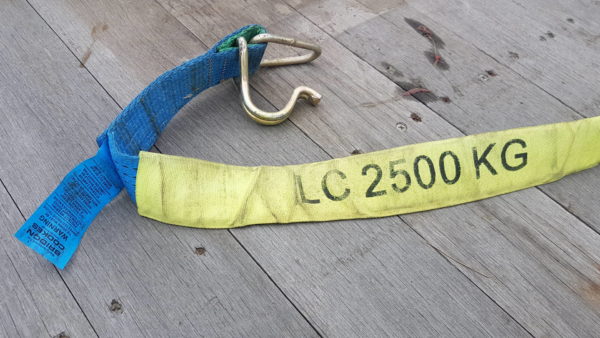
Strap label
Each strap should have a label or tag on the ratchet end which will confirm it meets the required standard (EN12195-2) and will give the breaking strain, lashing capacity, safe working load or working load limit, the length, date of manufacture, a serial number or code and confirmation that it should not be used for lifting (i.e. it’s not a truck-mounted crane sling). Certification includes CE, GS and TUV-approved.
One side of the strap often has a different stitching pattern so that you can quickly identify which direction the hook points.
How to use a ratchet strap
A strap is only as strong as the weakest link. A 2500kg strap attached to a rope rail that only supports 1000kg can only provide 1000kg of load restraint. Make sure you understand the vehicle’s load anchorage limitations when you’re loading.
Connecting a ratchet strap
- Roll out the strap around 1m. Keep hold of the hook end, then throw the rolled strap over the load. You can keep a half twist in the strap if you’re using a flat deck where it’ll be exposed to the wind, otherwise the strap can vibrate in the wind
- Connect the hook on the ratchet end in the exact same place on the opposite side – don’t lash loads diagonally.
- Release the ratchet and align the slot front to back.
- Feed the strap through the ratchet’s slot and pull it through – make sure there’s half a twist if it’ll be on a flat deck or no twists if you’re protecting the load using a curtainsider.
- Pull the strap end up, tight, to take up the slack, then start to crank the ratchet.
- Once you have some tension in the ratchet, get your body behind the ratchet by bending your knees and using two hands to crank it; this means less chance of injury
- Roll the loose strap into a roll with a centre hole of around 15cm until you have around a metre remaining before you get to the ratchet. Pass a loop of the remaining strap through the hole and back over the coil of strap, then pull it tight
- Either trap the coil of strap under the taught strap where it meets the load, or form a knot with the remainder around the taught strap, then twist the roll to tighten it. Don’t leave the coil swinging in the wind. If you’re using a curtainsider, you don’t need to secure the coil.
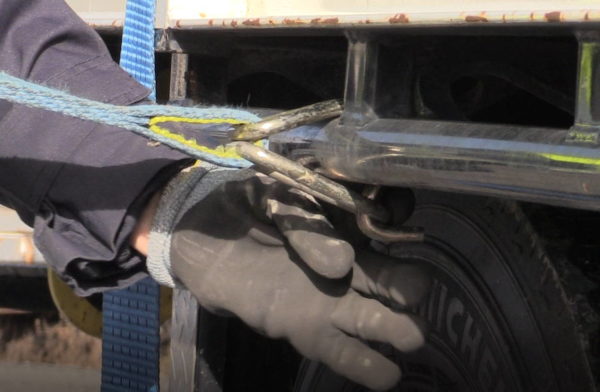
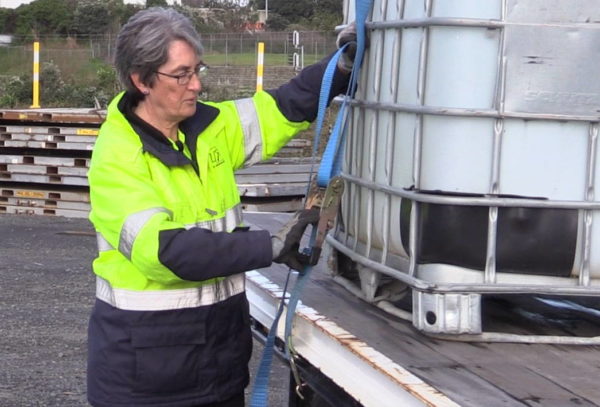
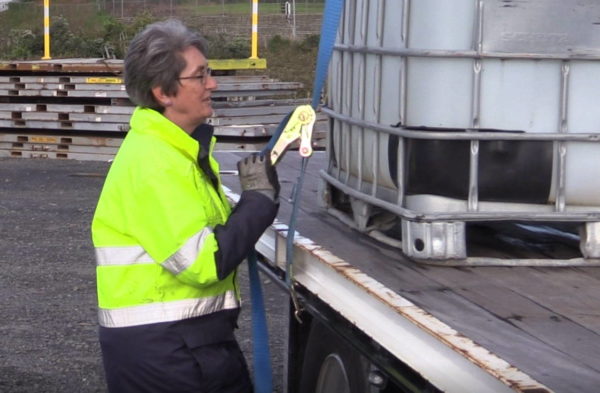
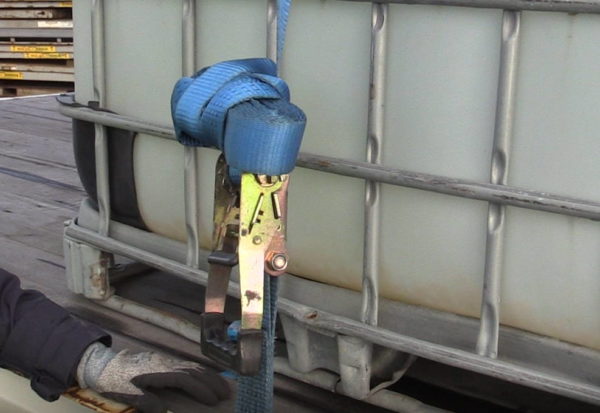
A ratchet strap isn’t always the best option for loading as they stretch slightly and they can be damaged easily. Chains, wire rope or direct containment can be used for other loads, such as steel, large machinery, stone blocks, logs, etc.
